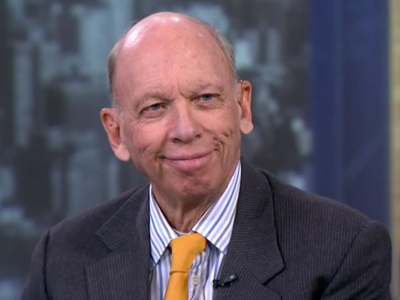by William Smead, Smead Capital Management
We hear numerous market strategists talk about stocks which are going up because “there is no alternative” to owning them. In the Wall Street vernacular, this goes by the phrase TINA.
What do they mean by invoking TINA as it pertains to common stocks? How does this relate to company moats and the price you should pay to gain ownership of a highly defended competitive position? How has growth stock investing momentum contributed to TINA? Can TINA stocks be found via our eight criteria for common stock selection?
The COVID-19 virus and nationwide quarantines have raised the day-to-day importance of many popular companies. Stock market investors have poured billions into these favorites under the theory that “there is no alternative” to owning them. In social media, Facebook is a TINA stock, Google is a search TINA and Amazon is a TINA in cloud computing and the relatively unprofitable e-commerce logistics platform. Tesla is TINA in electric cars and Apple is TINA for their affluent worldwide network of addicted customers. Investors are paying very high prices in some parabolic upward price moves for these wide moat companies.
Outside of financial euphoria episodes like the current one, wide moat stocks can be extremely profitable for long-duration investors like ourselves. Your moat is how well you are defended from competition. The companies we mentioned above are well defended against competition. They are so well defended against competition that we believe they are ultimately candidates for antitrust actions from the Department of Justice or are threatened by government regulation as utilities. Needless to say, early recognition of these wide moats would have led investors into profits many times their original investment.
A virtuous circle of growth stock and S&P 500 Index popularity have taken these TINA companies into the stratosphere. When the stocks of TINA companies go up, they are highly represented in the growth funds/ETFs and the large-cap index funds. This causes new money to flow into growth and the indexes and the circle continues. All this is done under the guise of “there is no alternative” to owning them.
The good news is there are wide-moat companies in currently out of favor industries which can become TINA companies when their industry comes back into favor. We have TINA potential already in our portfolio in Home Depot (HD), Target (TGT) and Lennar (LEN). They have benefitted from the current quarantining adjustments, but have huge demographic tailwinds behind them going forward. Millennials are discovering homeownership, home improvement and child rearing in this COVID environment and could see their biggest spending going forward. Home Depot has only one competitor, above-average income moms love Target and the largest public homebuilders have very little competition from mom-and-pop builders anymore.
Even better opportunities can come from wide-moat companies in industries which are deeply out of favor but have the ability to be TINA stocks when they get their day in the sun.
Amgen (AMGN) reminds us of Apple three or four years ago. They are the premier biotech company in the world (in our opinion), have a wonderful balance sheet, copious free cash flow and a terrific pipeline of future products. It trades at a reasonable price to earnings (P/E) multiple of 16x in a stock market which trades at 25x P/E.
Discovery Inc. (DISCA) is the largest producer of unscripted TV shows in the U.S. They dominate the market for 25-44-year-old women viewers with HGTV, Travel Channel, Food Network and TLC’s 90-day Fiancé. Fears of losing cable subscriber revenue and lower overall advertising revenue during the COVID-19 quarantines has punished the stock this year. However, when it comes to the most popular unscripted TV shows “there is no alternative” when it comes to their devoted customers. We believe it would be wise for the largest streaming companies to buy the company while these temporary worries dominate stock trading. Content is king and Discovery has over 150,000 hours of popular shows in their library and have had the ability to make unscripted TV safely during the pandemic.
Even with the advent of electric and hybrid automobiles, COVID has brought millennials into the realm of automobile ownership. Since most automobiles use gasoline, this could cause millennials to double their use of it. Since many other oil companies have had their balance sheets damaged by low oil prices in the last year, Chevron (CVX) stands out as the dominant company in the U.S. oil business. Thanks to the Saudi Arabians using the COVID-19 quarantines to shut down about 40% of U.S. production, there is certainly the possibility that “there is no alternative” to paying higher and higher prices for oil when the U.S. economy makes its comeback from the pandemic. At $100 per barrel on oil, Chevron would definitely be a TINA stock, just like it was in 2008, 2011 and 2014.
To get a sense of how cheap a barrel of oil is, we compared it to an ounce of gold in the chart below. Oil is the cheapest in relation to gold in 40 years. It is also cheap compared to stocks, bonds and almost any other meaningful asset class.
Source: Bloomberg.
As competitors drop by the wayside in brick and mortar shopping, the remaining owners of Class A retail malls could become TINA companies once again. Simon Property Group (SPG) is the largest and most financially strong player in the space. Many expect the temporary behavior changes of shoppers to be permanent. If they are wrong and shoppers come back out of the woodwork, the strongest remaining players could become the only alternative as the B, C and D malls have disappeared. Having a wider moat in a smaller overall industry could be very profitable, provide huge upside and potentially make them a TINA stock.
Our forty years of investing experience has proven that it is worth trying to find TINA companies among those with wide moats, which are in deeply out-of-favor industries like biotech, media, energy and income-producing class A mall operators. At the market bottom in 2009, Starbucks looked washed up to many as they entered a TINA decade. Target looked doomed when Amazon entered the grocery business in May of 2017 and Home Depot definitely struggled in the decade of the 2000s. We like wide moat companies which have the potential to end up with TINA popularity.
Warm regards,

William Smead
The information contained in this missive represents Smead Capital Management’s opinions, and should not be construed as personalized or individualized investment advice and are subject to change. Past performance is no guarantee of future results. Bill Smead, CIO, wrote this article. It should not be assumed that investing in any securities mentioned above will or will not be profitable. Portfolio composition is subject to change at any time and references to specific securities, industries and sectors in this letter are not recommendations to purchase or sell any particular security. Current and future portfolio holdings are subject to risk. In preparing this document, SCM has relied upon and assumed, without independent verification, the accuracy and completeness of all information available from public sources. A list of all recommendations made by Smead Capital Management within the past twelve-month period is available upon request.
©2020 Smead Capital Management, Inc. All rights reserved.














